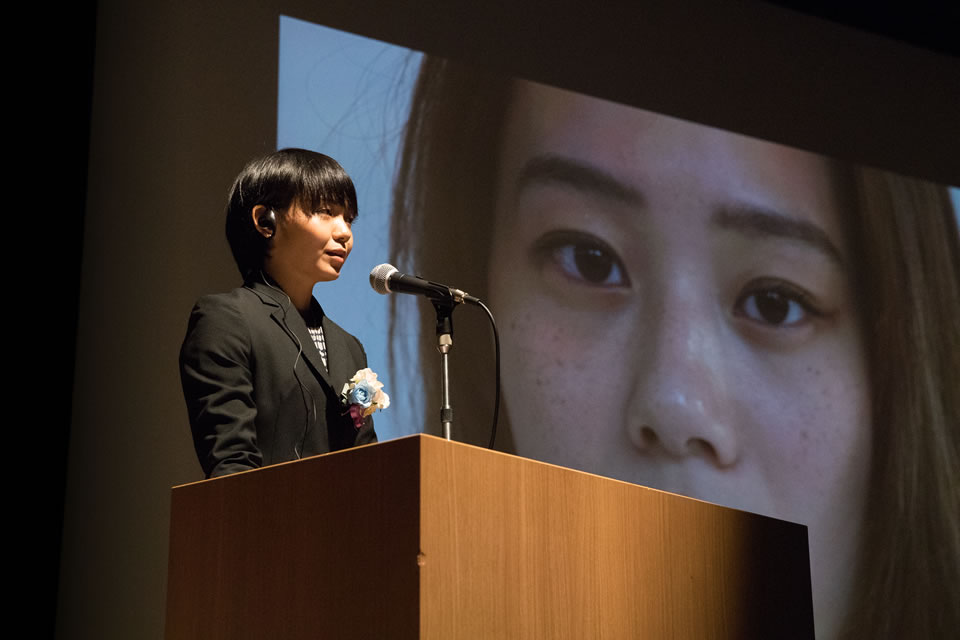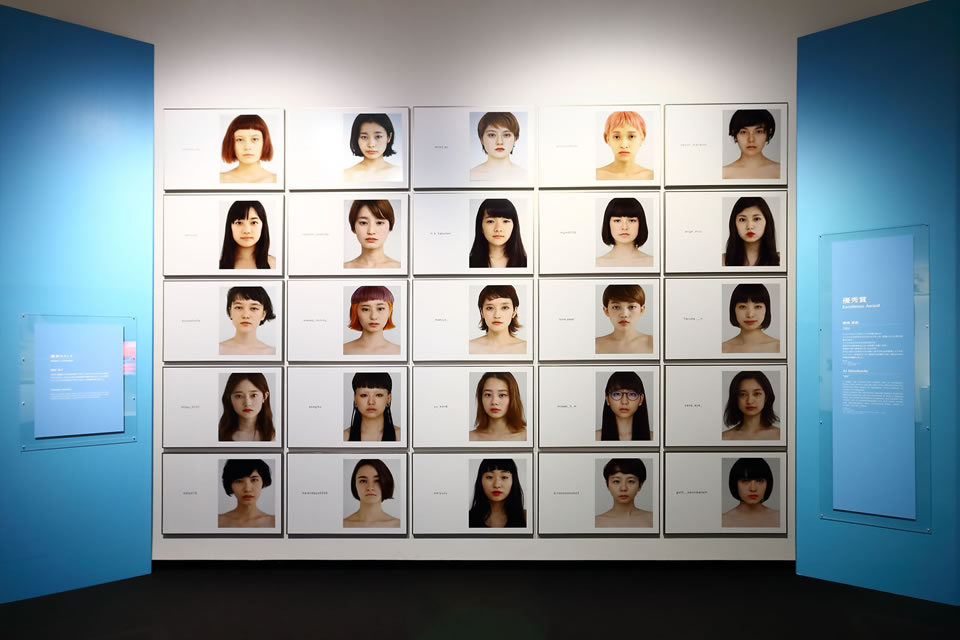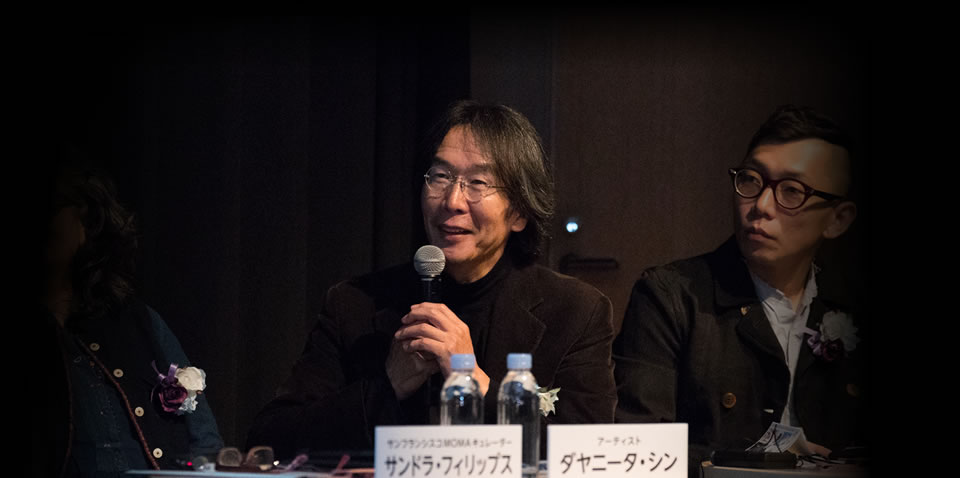PRESENTATION
I adore cute young women, so I gathered many cute young women to create a work of typology. I used the same composition and exposure for every photo, and I tried to remove any elements of individuality and even instructed them to not make any facial expressions. Like the famous Becher School typologies, and like Tomoko Sawada’s ID400, I was hoping to substantiate the sociality lurking in the surfaces of these young women.
I limited my subjects to just cute young women. If I had included men or broadened the age range, the targeted society would have been too large. Also, I searched Instagram for models and picked young women with many followers and tags. This lent more objectivity to my judgement of who was cute.
Instagram is full of what some term “Instagenic” photos. In photos, the popular young women with lots of followers and tags on Instagram are strikingly similar, much like a typology: All of them wear the latest fashions, apply the same trendy makeup, and eat the identical things in the identical places. At first I thought I would paste each subject’s Instagram picture beside her photograph, but I gave up because they were all virtually the same. Instead, I fashioned an ID to identify each subject.
Contrary to my expectations, when I met the young women in real life, they were very singular, with none of the resemblance seen on Instagram. I wonder if they all emulate the sense of values inherent in “Instagenic” photos, does that mean they have deficient identities? It turned out that none of them had any problem following my request to be natural and themselves. So maybe their pursuit of “Instagenic” is nothing more than a performance for them.
One of the models told me she was quitting Instagram modeling because she had found a proper job. You could not say she lacked identity, seeing her calm self-analysis of the merits of abandoning modeling. She totally understands Instagram and is fully versed in how to behave in real society. These young women are not lost in a gigantic online world and they have no misgivings about where they belong; rather, they assert that this is their world and that they live in it of their own free will. At the core of this assertion, I perceived the bright, optimistic, global sense of the digital native generation.


I know basically nothing about Instagram, but were you aiming for evenness, resemblance, and similarity when you took these shots? That’s what I felt and where I quickly got confused. In terms of how you took the shots, there are other ways to better bring out individual portraits. Was that your aim?
(Ai Mizobuchi)
I didn’t want to capture the impressions I got from the women, so I deliberately asked them to pose without any expression when I photographed them.

Judges’s Comment
Tomoko Sawada
More and more photographic art makes use of social media, but this work had an interesting approach of using account names like business cards.
Your presentation was different from what I had been expecting. I was thinking you might cite the system of Instagram or its presence within society, which would have been interesting. I thought you might use the dilution of human relationships in modern society — like how we might communicate online but not communicate when we meet in real life — as a symptom of modern society’s systems.
I feel you were too conscious of making a typology. Typology is nothing more than a technique. My impression was that you were fixated on typology and not decisive enough internally. A work of art, in my opinion, declares “this is what I believe” and then expands and comes to fruition as more and more people either share in your vision or oppose it.
You said you restricted yourself to cute young women because otherwise the society would be too broad. I don’t think limiting your society to cute young women makes any difference to its “broadness,” so I see no need for this limitation. So, again, if you were to boil down your concept to a single sentence, what would it be?
(Ai Mizobuchi)
I started out thinking there was a gap between social media and real society, but what I discovered is that there are actually women who deftly transverse back and forth between the online world and the real world. That’s the reason for presenting them in photographs.